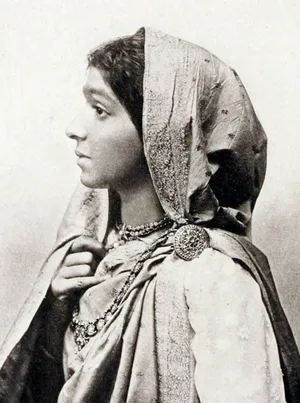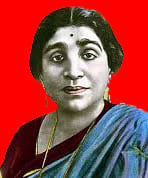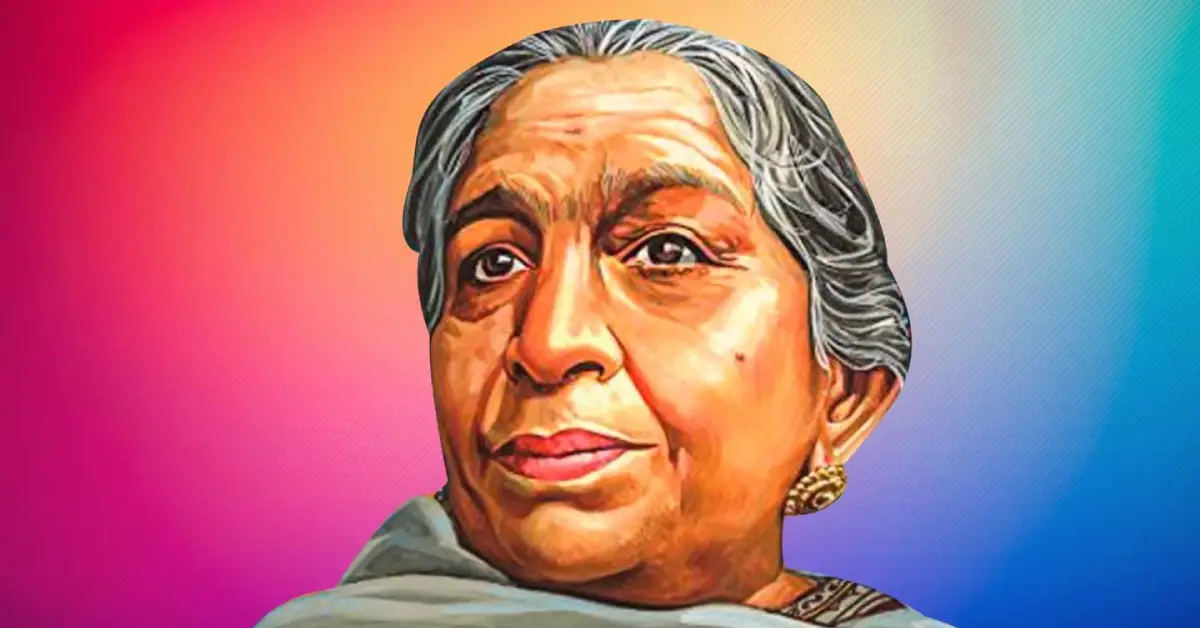February 13, 1879, marked the birth of one of India’s most remarkable figures – Sarojini Naidu, a woman who would go on to become not just a celebrated poet but also a fierce freedom fighter and champion of women’s rights. Known as the “Nightingale of India” for her lyrical mastery, Naidu’s life was a testament to the power of combining artistic sensitivity with political activism.
Early Life and Education

Born into a Bengali family in Hyderabad, Sarojini Naidu showed exceptional intellectual promise from an early age. Her father, Dr. Aghorenath Chattopadhyay, was a scientist and educator who founded the Nizam’s College, while her mother, Barada Sundari Devi, was a Bengali poet. This rich cultural environment nurtured young Sarojini’s literary talents, leading her to write her first poem at the age of twelve.
Her academic brilliance earned her a scholarship to study at King’s College, London, and later at Girton College, Cambridge – a remarkable achievement for an Indian woman in the late 19th century. During her time in England, she honed her poetic skills and developed a deeper understanding of social justice issues that would later influence her political career.
Literary Legacy

Sarojini Naidu’s poetry captured the essence of Indian life, traditions, and struggles. Her works, including collections like “The Golden Threshold” (1905) and “The Bird of Time” (1912), earned international acclaim. Her verses combined Indian ethos with English romantic traditions, creating a unique literary style that earned her the title “Nightingale of India” from Mahatma Gandhi.
Champion of Women’s Rights
Throughout her life, Naidu remained a steadfast advocate for women’s empowerment. She worked tirelessly to:
- Promote women’s education, establishing numerous girls’ schools and colleges
- Campaign for women’s suffrage in India
- Fight against child marriage and other social practices that limited women’s freedoms
- Encourage women’s participation in the freedom movement and political sphere
Her advocacy went beyond mere rhetoric – she led by example, becoming one of the first women to occupy significant political positions in colonial India.
Political Career and Freedom Struggle
Naidu’s entry into politics was marked by her participation in the Indian National Congress and her close association with Mahatma Gandhi. She played pivotal roles in several key moments of India’s freedom struggle:
- Led the Salt March with Gandhi in 1930
- Became the first Indian woman to serve as the President of the Indian National Congress (1925)
- Participated in the Civil Disobedience Movement and was imprisoned multiple times
- Served as the first woman Governor of an Indian state (Uttar Pradesh) after independence
Legacy and Impact
When Sarojini Naidu passed away on March 2, 1949, she left behind a legacy that continues to inspire generations. Her contributions to literature, women’s rights, and India’s freedom struggle demonstrate how art and activism can work together to create meaningful social change.
Her achievements were particularly remarkable given the social constraints of her time. As a woman in colonial India, she broke numerous barriers and challenged conventional norms, paving the way for future generations of Indian women in politics and public life.
Enduring Influence of Sarojini Naidu
Today, Sarojini Naidu’s influence can be seen in various aspects of Indian society:
- Her poetry continues to be studied in schools and universities across India
- The Sarojini Naidu Award for Women’s Empowerment is presented annually
- Educational institutions and public spaces bear her name, preserving her memory
- Her life serves as an inspiration for women in politics and social activism
Sarojini Naidu’s life reminds us that one person can excel in multiple domains – as a poet, politician, and social reformer – while maintaining unwavering dedication to their principles. Her journey from a young poet to a national leader exemplifies the power of combining artistic sensitivity with political conviction, making her a role model for generations to come.
As we reflect on her legacy, it becomes clear that Sarojini Naidu was not just the Nightingale of India, but a visionary who helped shape the country’s destiny through her words and actions. Her life teaches us that the pursuit of artistic excellence need not come at the expense of social responsibility, and that true leadership encompasses both cultural enrichment and political transformation.
FAQs About Sarojini Naidu
Why was Sarojini Naidu called the Nightingale of India?
Mahatma Gandhi gave Sarojini Naidu the title “Nightingale of India” (Bharatiya Kokila) because of her beautiful poetry that captured the spirit and essence of Indian life. Her lyrical mastery and contribution to Indian literature earned her this prestigious nickname.
What are Sarojini Naidu’s most famous poems?
Some of her most celebrated works include “In the Bazaars of Hyderabad,” “Palanquin Bearers,” and collections like “The Golden Threshold” (1905) and “The Bird of Time” (1912). These works beautifully blend Indian themes with English romantic traditions.
What was Sarojini Naidu’s role in India’s freedom struggle?
Naidu was a prominent freedom fighter who worked closely with Mahatma Gandhi. She participated in the Salt March (1930), led the Civil Disobedience Movement, served as President of the Indian National Congress (1925), and was imprisoned multiple times for her involvement in the independence movement.
What were her major achievements in politics?
Her most significant political achievements include:
Becoming the first woman President of the Indian National Congress (1925)
Serving as the first woman Governor of an Indian state (Uttar Pradesh)
Playing a crucial role in the Indian independence movement
Contributing to the development of women’s rights and education in India
How did Sarojini Naidu contribute to women’s rights?
Naidu was a pioneering advocate for women’s rights in India. She worked to promote women’s education, fought against child marriage, campaigned for women’s suffrage, and encouraged women’s participation in politics. Her own achievements as a political leader broke numerous gender barriers in Indian society.
What was Sarojini Naidu’s educational background?
She was a brilliant student who studied at King’s College, London, and later at Girton College, Cambridge, on scholarship. This was a remarkable achievement for an Indian woman in the late 19th century. She was proficient in multiple languages and began writing poetry at a very young age.
When and where was Sarojini Naidu born and when did she pass away?
Sarojini Naidu was born on February 13, 1879, in Hyderabad, India. She passed away on March 2, 1949, while serving as the Governor of Uttar Pradesh.
What is Sarojini Naidu’s lasting legacy?
Her legacy lives on through her poetry, political achievements, and contributions to women’s rights. Several awards, institutions, and public spaces are named after her, and her works continue to be studied in educational institutions across India. She remains an inspiration for women in politics and social activism.
